Hanfu Explained: Everything You Need To About Chinese Traditional Clothing
- Hanfu, knowledge
Hanfu, as the representative of traditional clothing in ancient China, is not just a garment, but also carries profound cultural connotations and ethnic spirit. In recent years, with the rise of Guochao culture, Hanfu has gradually entered the public eye, becoming a way for young people to express their personality and cultural confidence.
This article will provide a detailed introduction to the concept, history, classification, prices, and purchasing channels of Hanfu, helping readers to have a comprehensive understanding of Hanfu culture.
What is Hanfu?
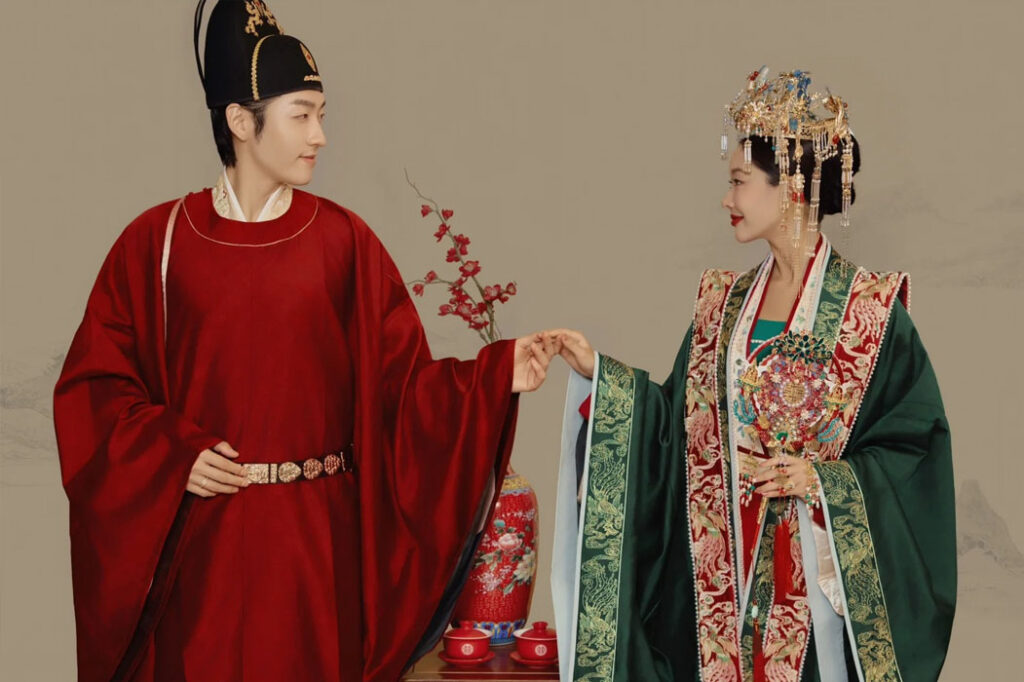
Hanfu, as the name suggests, refers to the traditional attire of the Han ethnic group in China. The structural components of Hanfu clothing, from top to bottom, are divided into ten parts: collar, lapel, overlap, lapel edge, hem, sleeve, sleeve cuff, belt, and hemline, with front and back symmetry.
Hanfu is not just a piece of clothing; it is a comprehensive ceremonial system composed of clothing, headwear, facial adornments, footwear, accessories, and more.
The differences in styles between men’s and women’s Hanfu primarily manifest in the tailoring, collar types, sleeve style, and other aspects of the clothing. Men’s Hanfu tends to showcase a robust and steady style, while women’s Hanfu dress often embodies a softer and more graceful temperament.
Types of Hanfu Styles Across Different Dynasties
Qin Dynasty Hanfu
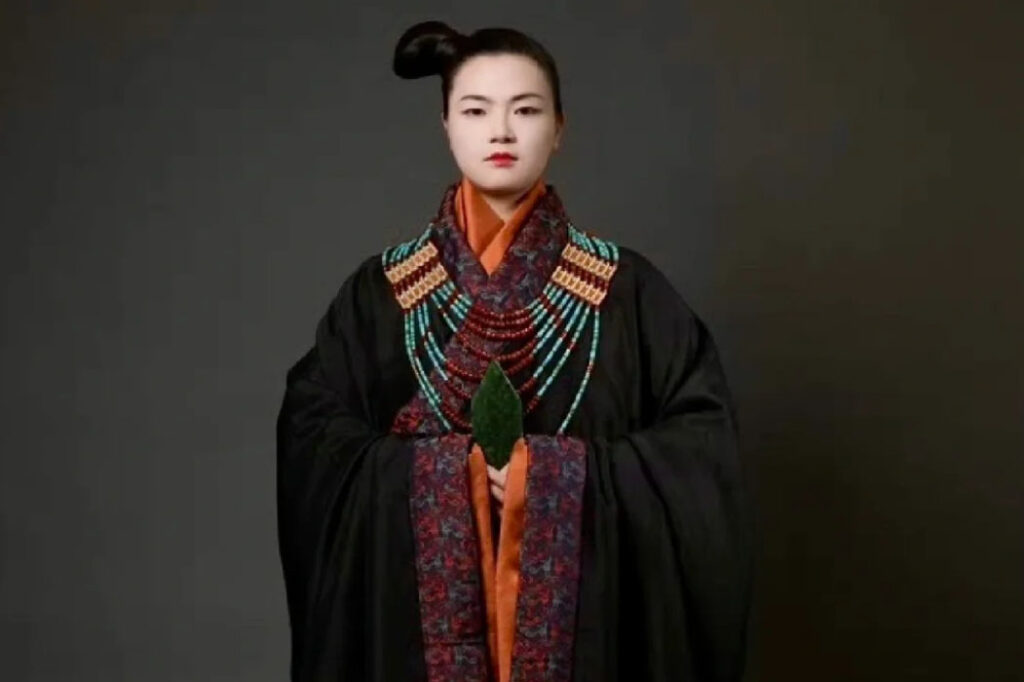
The clothing styles of the Qin Dynasty were mainly designed for ease of movement and work. Common garments included the deep garment and short brown garment. The deep garment was a type of attire where the upper garment and lower skirt were connected, facilitating wear and movement. The short brown garment, on the other hand, was a shorter upper garment suitable for laborers. Clothing styles during the Qin Dynasty were relatively loose to accommodate various work requirements.
Wei-Jin Northern and Southern Dynasties
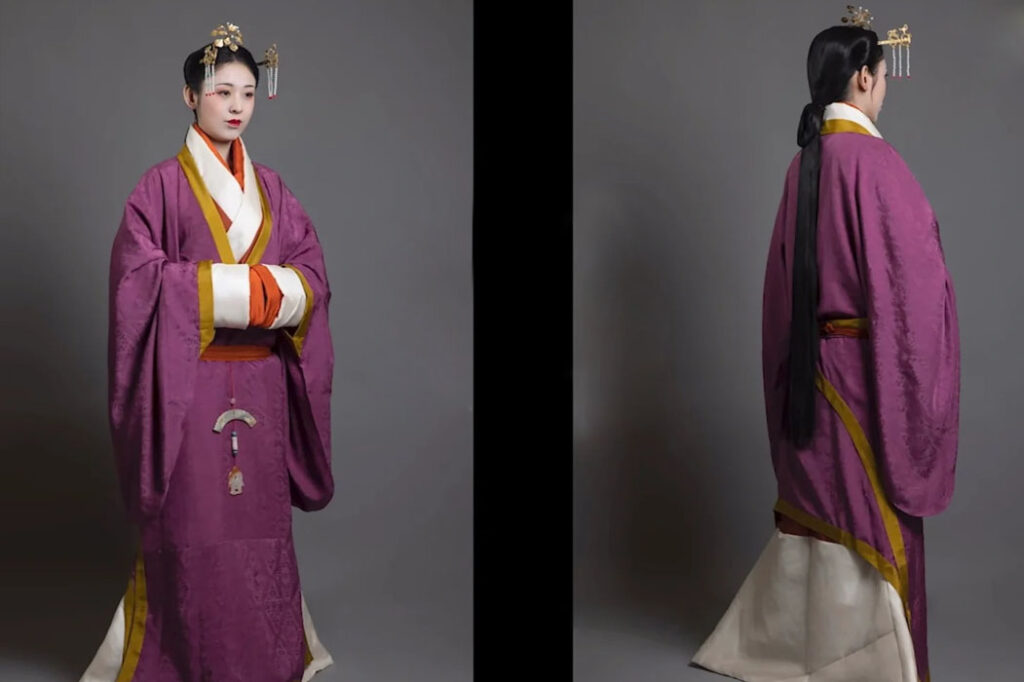
In the Wei-Jin Northern and Southern Dynasties period, clothing styles emphasized cross-collars and wide sleeves with loose cuffs. Upper garments typically consisted of jackets and ruqun for women, paired with pleated skirts that reached the ground, narrow at the waist and flared at the bottom. Main clothing styles during this period included Jinru and Zaju.
Tang Dynasty Hanfu

The clothing in Tang Dynasty had exquisite materials, bright colors and various styles, and the ornaments were exquisite and beautiful. Clothing temperament is graceful and elegant, fashion and elegance, in the long history of ancient Chinese clothing, can be called the peak, bright and brilliant.
In the Tang Dynasty, the main form of men’s shirts was round collar robes, with head cap or gauze cap, leather belt around the waist and black boots under the feet as the typical attire. The head scarf, which was used to wrap hair with four long bands hanging down at four corners, was very popular in the Tang Dynasty.
About Tang Dynasty women’s style hanfu, There are jackets, shirts, robes, half arms, silks and so on, and skirts, pants and so on. With shoes, hats, purses, etc., rich and colorful. From Sui to the early Tang Dynasty, women’s clothing mainly consisted of short jackets with small sleeves, long skirts and a silk scarf draped over their shoulders.
Song Dynasty Hanfu
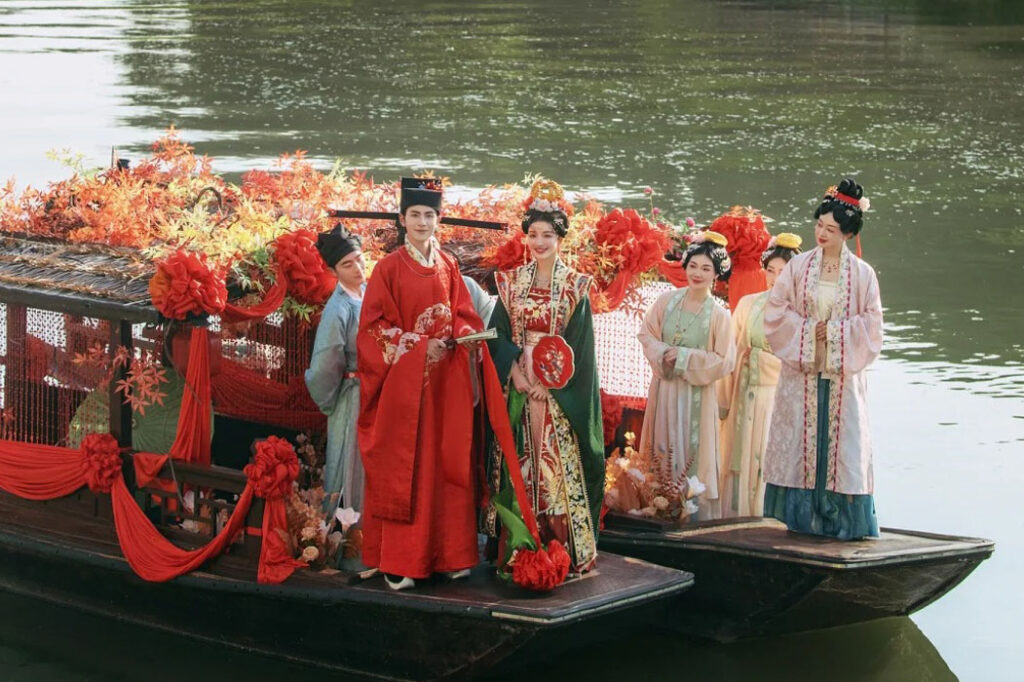
During the Song Dynasty, women’s attire became relatively conservative compared to the Tang Dynasty, featuring narrow-sleeved jackets and predominantly overlapping fronts fastened with cords. The garment length typically reached the knees, with men wearing daopao, deep garments, cross-collared half-sleeves, and straight robes, while women wore various styles of clothes such as Songma, jackets, Song trousers, and half-sleeves.
Ming Dynasty Hanfu
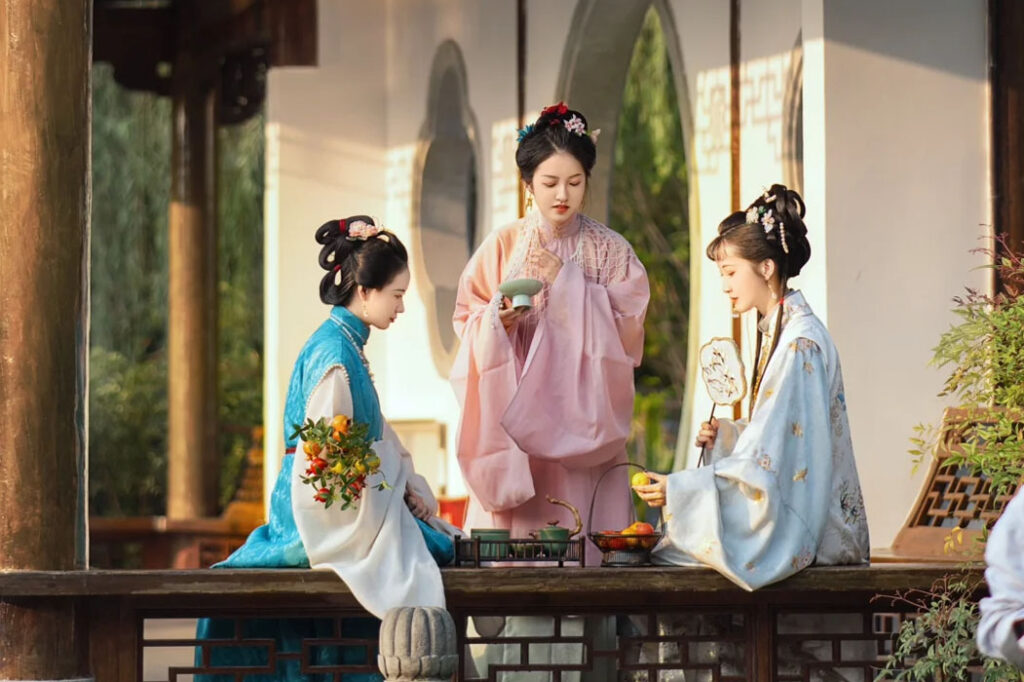
By the Ming Dynasty, buttons replaced traditional cord fastenings, with upright and slanted fronts and collar designs including stand-up collars and round collars.
Skirts combined characteristics of Mongolian attire from the Yuan Dynasty, featuring a front and back inverted trapezoidal “horse-face skirt.” Men’s attire included cross-collared robes such as yesa and tilin, while women’s attire was more diverse, including long and short jackets, shirts, and gauze with stand-up or slanted collars, as well as cloaks, xiapei, horse-face skirts, cloud shoulders, and bibs.
Qing Dynasty Hanfu
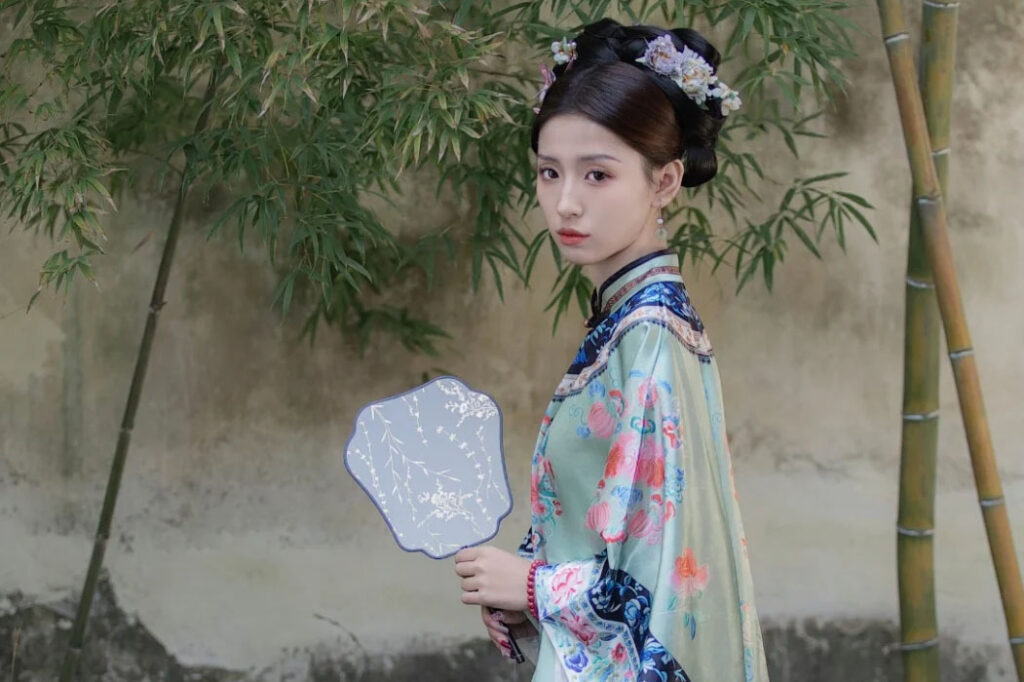
During the Qing Dynasty, textile technology was highly advanced, with materials such as silk, satin, and cotton widely used. Additionally, embroidery, brocade weaving, and silk weaving reached a high level of craftsmanship.
Common garments for men included robes, magua (a type of jacket), and short jackets, while women wore qipao (cheongsam) and ruqun (a type of traditional Chinese dress). The qipao is one of the most representative garments of the Qing Dynasty.
Modern Hanfu
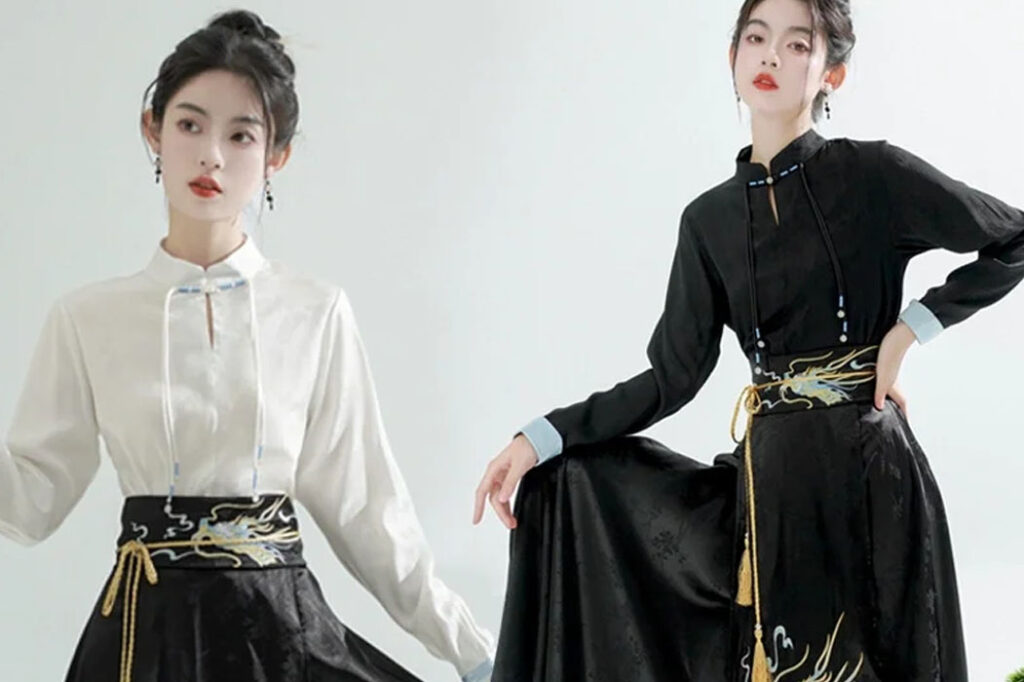
Modern Han fu is a national traditional costume system built on the basis of inheriting the basic characteristics of ancient Hanfu and combining modern people’s aesthetic and life style. It is not only the restoration of the appearance of ancient Hanfu, but also the modernization of practice and innovation on the basis of retaining the traditional commonness, to realize the modern application and continuation of traditional Chinese clothing.
When can you wear hanfu?
As a type of han Chinese clothing, the occasions and times for wearing Hanfu have evolved from daily life in ancient times to diverse choices of occasion in modern times. Here are some occasions and times suitable for wearing Hanfu:
Art Photography
With its unique aesthetics and exquisite craftsmanship, has become a popular choice for art photography. When conducting ancient-style, vintage, or conceptual photography, wearing Hanfu can enhance the artistic effect and visual impact of the photos.
Cultural Events
Wearing Hanfu when participating in cultural events themed around Hanfu, traditional festival celebrations, or ancient-style concerts not only aligns with the event’s theme but also deepens the experience and understanding of traditional culture.
Tourist Attractions
When visiting historical and culturally significant tourist attractions such as ancient towns, historical sites, and gardens, wearing Hanfu allows one to better blend into the environment, experience the historical atmosphere, and pay homage to traditional culture.
Traditional Festivals
During traditional Chinese festivals such as the Spring Festival, Mid-Autumn Festival, and Dragon Boat Festival, wearing Hanfu can enhance the festive atmosphere and allow individuals to experience the charm of traditional culture. These festivals are often closely connected to the historical background of Hanfu. By wearing Hanfu to celebrate these festivals, one can better understand and experience the cultural significance embedded within Chinese festivals.
Daily life
Apart from special occasions, wearing Hanfu in everyday life is also acceptable. New Chinese-style Hanfu has gradually become a new favorite for daily wear due to its unique charm.
This type of clothing combines traditional Hanfu elements with modern design concepts, not only inheriting traditional clothes and the beauty of classics but also adding a sense of fashion. It allows wearers to express traditional cultural values while showcasing a unique fashion attitude.
How much is a Hanfu?

The price of a set of Hanfu can vary significantly depending on various factors, including the material, craftsmanship, brand, design complexity, and whether it is a limited edition or custom-made. According to search results data, the price of Hanfu on different e-commerce platforms ranges from $15 to several thousand dollars, catering to the needs of consumers from various countries and different income levels overseas.
Where can you buy hanfu clothing?
Although the channels for purchasing Hanfu outside of China are relatively limited, there are still several viable options available. When selecting suppliers, it’s essential to pay attention to the quality of the clothing and the return policy. Additionally, it’s important to note that most Hanfu manufacturers are Chinese, so the sizes they provide are typically in Chinese standards and measured in centimeters.
Here are some ways to purchase Hanfu overseas:
International E-commerce Platforms: International e-commerce platforms such as Amazon, eBay, etc., offer convenient ways to purchase Hanfu. Many sellers provide direct shipping services, delivering Hanfu directly to the buyer’s overseas address. When making a purchase, be sure to check the product details, fabric information, size charts, and buyer reviews to ensure the quality and authenticity of the Hanfu.
Specialized Hanfu Websites: Some websites dedicated to selling Hanfu, such as Delleb, Hanfu Story, New Moon Dance, etc., also offer international shipping services. These websites usually provide a wider range of Hanfu styles and more professional customer service, helping buyers to choose suitable Hanfu.
Social Media and Online Forums: You can find information and recommendations about purchasing Hanfu through social media platforms and forums for Hanfu enthusiasts. Many Hanfu enthusiasts share their purchasing experiences and insights on these platforms, providing valuable purchasing advice and links.
Local Hanfu Communities and Cultural Events: Joining local Hanfu communities or participating in cultural events can provide more information and resources for purchasing Hanfu. Some cities may host Hanfu festivals, cultural exhibitions, or fashion shows, where Hanfu sales booths are often available, providing opportunities for trying on and purchasing Hanfu.
What is difference bewteen hanfu & Qipao(Cheongsam)?
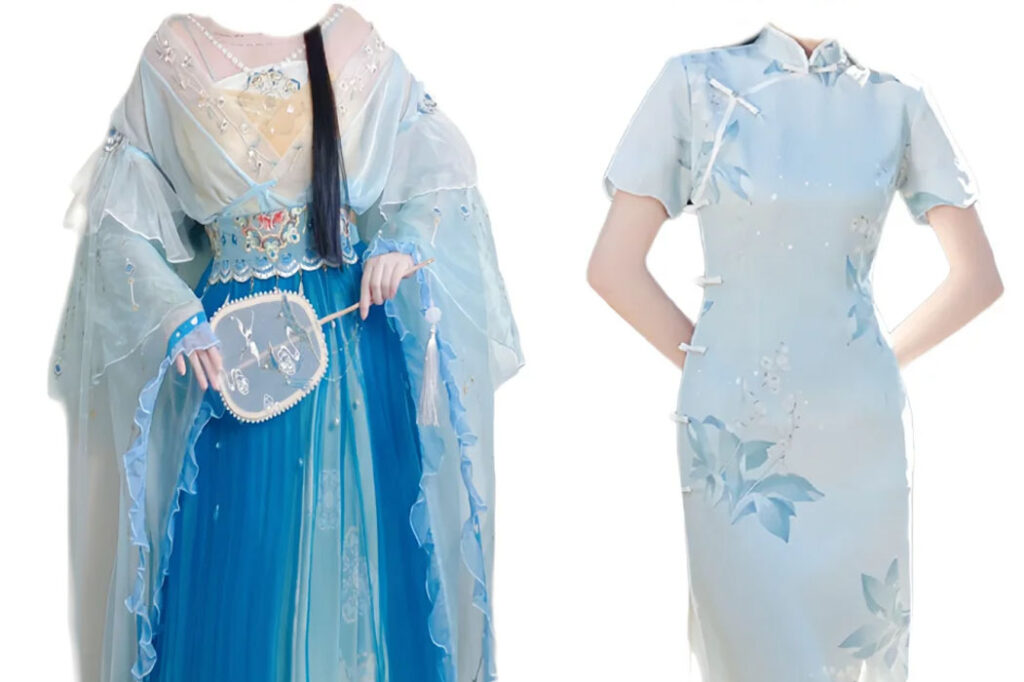
Hanfu The characteristic features of Hanfu include cross-collar (the left and right flaps overlap), rightward closure (the left flap overlaps the right flap), wide robe and large sleeves, and flat cutting.Hanfu comes in various styles, including deep garments, curved-hem robes, and cross-collared robes, each with its specific cultural background and wearing norms.
Qipao (Cheongsam) The characteristic features of Qipao, on the other hand, focus more on showcasing the curves of women’s bodies. It typically features a high collar, tight-fitting cut, and side slits. The aesthetic features of Qipao are reflected in its spatial beauty, charm, and attention to detail, such as the close-fitting but not clinging cut, flowing lines, and details like slits and lace decorations.
Is Hanfu Suitable for Non-Chinese People to Wear?
Yes, non-Chinese people can also wear Hanfu. Hanfu, as a traditional attire, is not only a cultural heritage of the Chinese people but also a part of human civilization. Therefore, whether one is Chinese or not, they can choose to wear Hanfu based on their interests and preferences.
Wearing Hanfu can be an expression of respect and admiration for Chinese traditional culture, as well as a way to engage with friends in cultural exchange and experience. Of course, when wearing Hanfu, it is important to respect and understand the cultural background, etiquette, and significance of Hanfu.

